Decorating your home with beautiful green plants is a sure bet. In recent years, there has been a growing craze for houseplants with pink foliage.
Traditionally, houseplants are appreciated for their touch of green and their connection with nature. But for some time now, plants with pink leaves have been enjoying growing success!

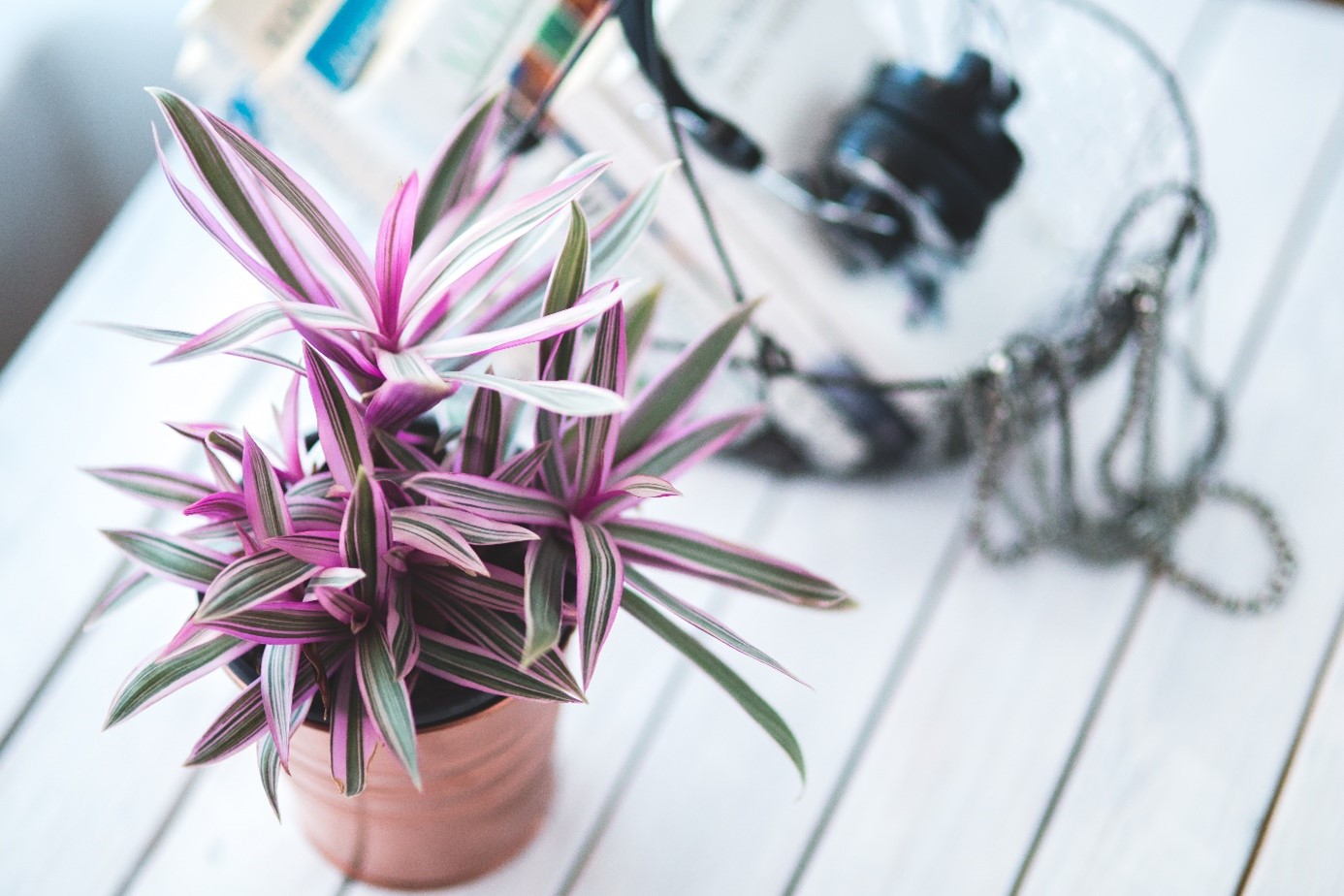
Pink houseplants come in a wide variety of shapes, sizes and patterns. There are houseplants with pink veins, pink mottling all around the leaf blade, and sometimes leaves that are almost entirely pink.
Plants with pink patterns on their leaves require no special care. No more so than your usual green plants.
Why this new passion for pink?
The color pink, a symbol
Pink subtly combines fiery, passionate red with the innocence and purity of white. The variations of pink are endless. Soft, pale pinks are often associated with romance and soft, tranquil moods. In contrast, the intense pinks of fuchsias stimulate the senses and attract attention even from a distance.
In the garden, pink plants are plentiful and easy to use. It's one of the most common colors.


Pink decor: an enduring trend
Not only have pink houseplants been in vogue in recent years, but pink decorating is back in vogue too! Why pink? No doubt because this tender color so aptly evokes the tender love we all need in these difficult times.
Rose and houseplant lovers are in luck: more and more of them are available from florists and nurseries. Some are fun and unexpected. And the variations of rose are endless: sometimes soft and soothing, sometimes warm and tropical, or young and nostalgic.


5 plants with pink foliage
Plants with pink foliage often have a kind of texture or pattern, both green and pink. The complementary colors of these pretty pink-leaved houseplants are particularly eye-catching.
Philodendron Pink Princess
Very popular since 2020. The pink philodendron - often called the "pink princess" - is unique in its imperfections. Instead of showing predictable patterns and mottling, this plant's leaves can vary considerably. Some leaves are completely green, while others are completely pink, still others are half pink and half purple, and some leaves feature a variety of patterns.

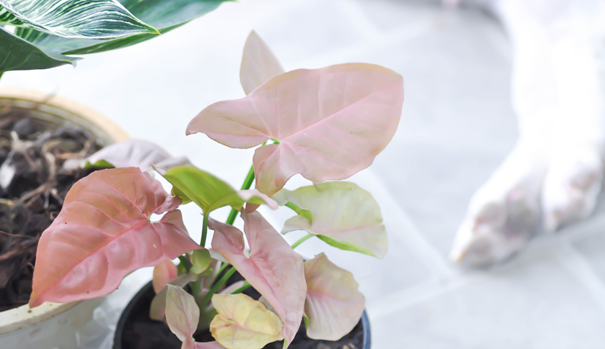
For healthy growth and more balanced color variation, place your Philodendron Pink Princess close to a source of indirect light.
Fittonia
Fittonia is a small plant perfect for terrariums. It likes indirect light and moist soil. Their leaves fall off if you don't water them enough. Variants include Fittonia verschaffeltii 'Pink Angel' or Fittonia albivenis 'Frankie'.


Calathea ornata
Calathea are more difficult to grow. This is not a plant for beginners. These plants like bright, indirect light and high humidity. If you have a window in your bathroom that gets good light, these plants will thrive there. Calathea ornata stripes are pink.

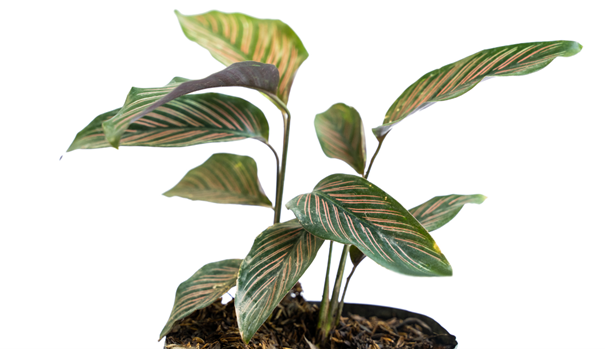
Caladium
For indoor and outdoor cultivation. Available in a range of colors, including several varieties with all-pink leaves: 'Classic Pink', 'Pink Splash' and 'Pink Symphony'. Place in a well-lit spot, away from direct sunlight. They like their soil to dry out between waterings, so be sure to use a well-draining potting soil.


Syngonium
There are many shades of green and pink. The 'Pink' or 'Neon Robusta' cultivars have wonderful pale pink leaves (provided the plant is placed as close as possible to indirect light).

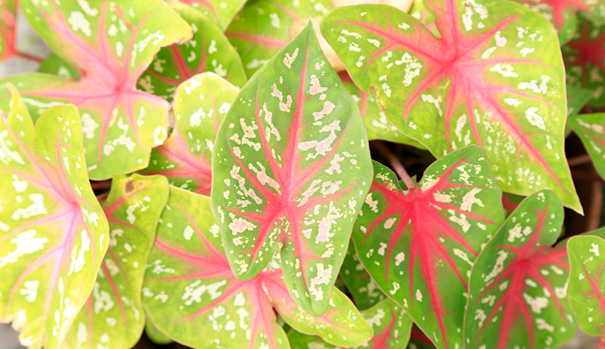
These climbing plants can reach up to 1.80 m. They are not too difficult to maintain. Moderate watering but regular misting is recommended, as syngoniums like humidity.
All three species - Caladium, Calathea and Syngonium - are very popular with houseplant enthusiasts. Often mistaken for one another, these tropical beauties differ in several respects, including leaf size and thickness. Caladiums and Syngoniums are the easiest to grow.
Tradescantia tricolor
Known as the spider plant, Tradescantia Tricolor is a small, easy-to-maintain plant. Available in Rainbow, Nanouk and Sailor Rose varieties, it tends to grow quickly and features multicolored striped leaves. Once again, bright, indirect light is best for this plant.

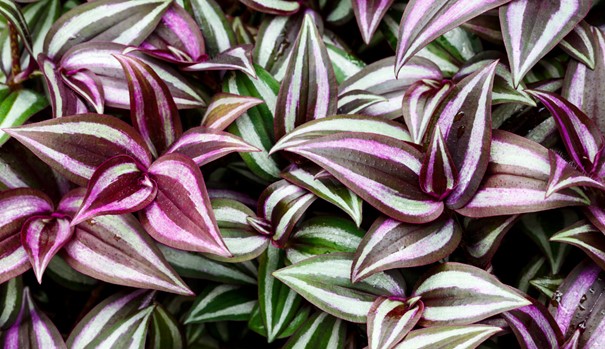
Browse the collection